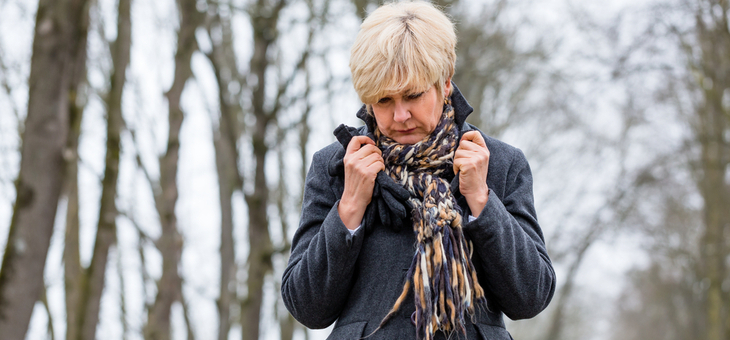I think everybody can say they’ve felt tempted to stay curled up on the couch with a mug of something warm when the nights get longer and the temperatures drop. But if you feel consistently bleak during the winter months, it could be something a little more serious.
What is SAD?
Seasonal affective disorder (SAD) is a type of depression that’s tied to the change of seasons. SAD starts and ends at around the same time each year – usually late autumn or early winter when there is less sunlight, and the nights are longer. Some people get it in spring or early summer, but that’s not as common.
Seasonal affective disorder can sap your energy and leave you feeling down and wiped out until the season is over and brighter times are closer.
Read more: Winter maladies to avoid
What are the symptoms?
The same feelings that come with depression are often present for people with SAD. Things such as feeling hopeless, lacking energy, changes in sleeping patterns and a loss of pleasure in things you usually enjoy are all symptoms, as well as:
- feelings of heaviness in the limbs
- having problems with sleeping
- feeling sluggish or agitated
- having difficulty concentrating
- feeling hopeless, worthless or guilty
- having frequent thoughts of death or suicide.
Changes in appetite and weight are also common, with sufferers reporting an increased appetite and strong cravings for sugary, fatty, carbohydrate-rich foods.
Symptoms may start out mild and become more severe as the season progresses.
The cause
SAD is thought to be caused by changes to the body’s circadian rhythms (its ‘body clock’) at certain times of the year.
Fewer daylight hours could raise levels of melatonin and lower levels of serotonin, the two substances that help keep your sleep regular and your mood stable.
“Research shows people with SAD have a slightly different sensitivity to light, [so] they’re predisposed to developing it,” says psychiatrist Dr Balu Pitchiah, a SAD specialist.
Who gets SAD?
Statistically speaking, the farther you are from the equator, the more likely you are to have SAD, but anyone can have the condition.
Read more: Five diet and fitness steps to take now to stay healthy this winter
Many Australians report that they feel flat and lethargic in winter, and people with a family or personal history of depression are more likely to experience it. Women are also four times more likely to get SAD than men.
Treatments for SAD
Medication
Depending on your symptoms, your doctor might suggest an antidepressant drug called a selective serotonin reuptake inhibitor (SSRI).
They are the most commonly prescribed antidepressants and can ease symptoms of moderate to severe depression, they are relatively safe and typically cause fewer side-effects than other types of antidepressants.
Talk to your GP about any risks or side-effects that may concern you and be aware that you may need to try different SSRIs before you find the one that works for you.
Light therapy
Typically, light therapy is meant to compensate for the lack of exposure to sunlight that is thought to be linked to SAD.
The most common light therapy uses a light box that is much brighter than a lamp or other light fixture in your home. You just place the light box on a table and sit in front of it at the specified distance for anywhere from 30 minutes to two hours each day.
Talk therapy
A therapist can help you identify patterns of negative thinking that make you feel down. One approach, cognitive behavioural therapy, tries to replace those thoughts with happier ones as well as with activities that engage you and give you pleasure.
Read more: Doctor shares top five tips to shrug off that winter lethargy
Keep the blues at bay
The power of behavioural habits shouldn’t be underestimated, Dr Pitchiah says. There are three main things normally recommended, sticking to a good routine, diet and physical activity, which he stresses can have very positive results.
“When people with SAD get their symptoms, they tend to sleep more and can’t stick to a routine. But the first thing we say is, it’s really, really important to stick to your routine – try and stick to getting up at the same time each day and stick to your routine.”
Keeping up social contacts also important. “If someone’s suffering with SAD, they may find it difficult to maintain contact with friends and family. Arranging regular catch-ups in advance might help to overcome this,” says Dr Pitchiah. “Human contact is good for building emotional resilience and it doesn’t have to be anything too complicated – even just going for dinner one evening or a walk at the weekend can help.”
Don’t brush off that yearly feeling as simply a case of the ‘winter blues’ or a seasonal funk that you have to tough out on your own. Take steps to keep your mood and motivation steady throughout the year.
Are you affected by SAD? Do you get the winter blues? What do you do to stay positive?
If you enjoy our content, don’t keep it to yourself. Share our free eNews with your friends and encourage them to sign up.
Disclaimer: This article contains general information about health issues and is not advice. For health advice, consult your medical practitioner.

